Often confused with a zinnia, gerbera daisies are another popular flower to plant because of their gorgeously vibrant colors and the classic cheerful daisy-like flower. One big difference in the two is that Gerbera Daisies are slightly more frost tolerant. So if you are asking yourself, are Gerbera Daisies Perennials or Annuals? It Depends!

This post is part three of a gardening series asking if our favorite flowers are perennials. This post focuses on the strikingly vibrant Gerbera Daisy. So the question is – are Gerbera Daisies perennials or annuals?
Check out the other parts of this series!
- Part One is: Are Impatiens Perennials or Annuals?
- Part Two is: Are Zinnias Perennials or Annuals?
Disclaimer: Affiliate links may be included for ease of reference and convenience. If used for purchase, they will result in a small commission at no additional cost to the buyer.
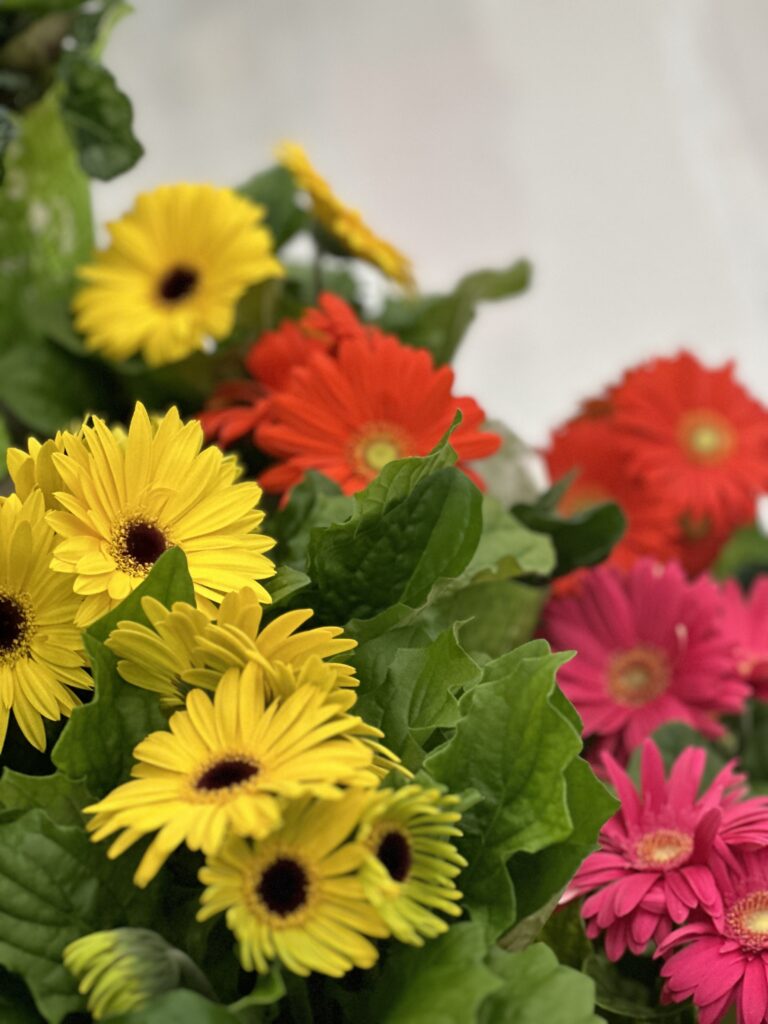
Are Gerbera Daisies Perennials? It Depends…
Like with impatiens flowers, a gerbera daisy thrives as a perennial (returning year after year) in warm climates with mild winters (USDA zones 8-10). No real surprise, as it originates in South Africa – this plant likes heat and does not thrive in colder climates.
For those in colder regions with harsh winters (zones 7 & up), they’re typically treated as annuals, planted outdoors each spring after the danger of frost has passed.
The National Gardening Association has a plant database to find more details on the distinctions between annual and perennial gerbera daisies based on climate zones. Know your zone!
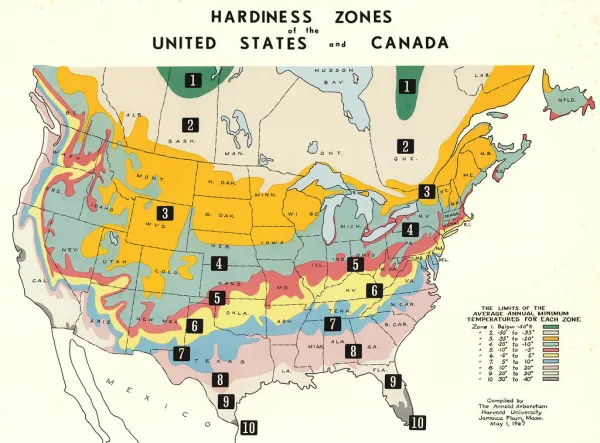
Gerbera Daisy Varieties & Colors
One thing we know about a Gerbera Daisy – they are COLORFUL. We love them for their bright flowers! So many options for super vibrant colorful flowers that are hard to resist. Red, orange, yellow, pink, white – even bi-colored ones are out there!
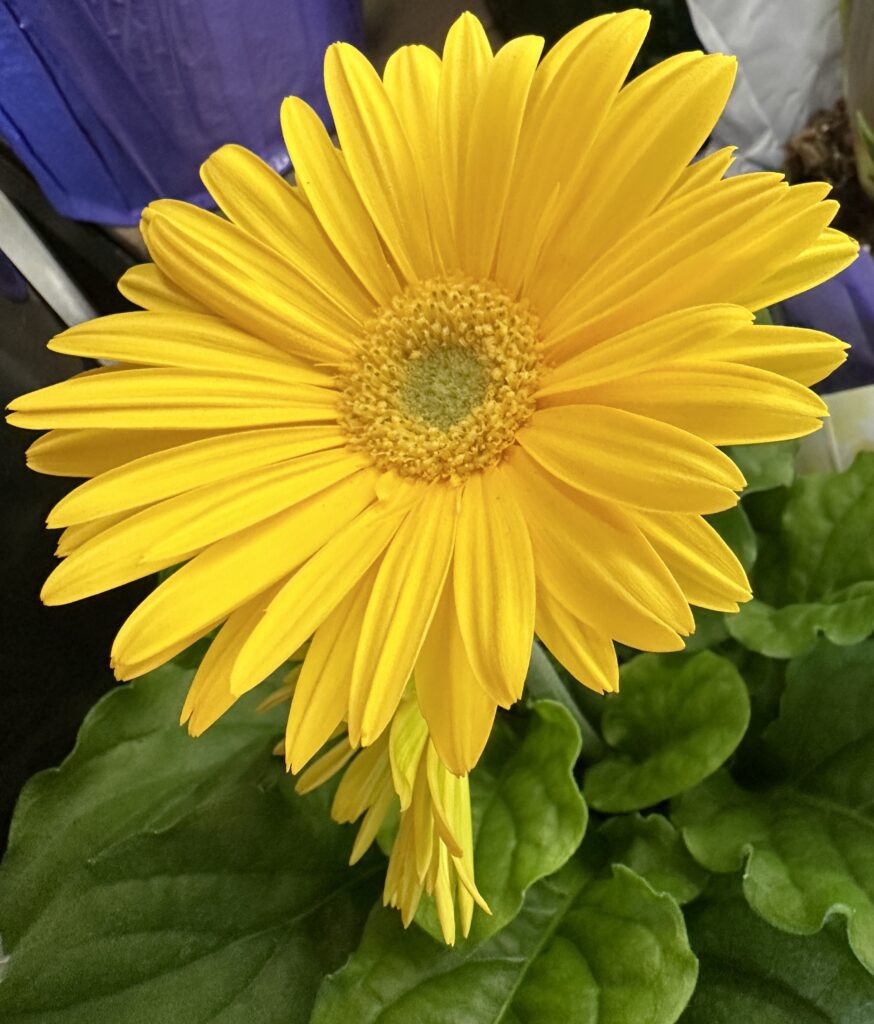
For most of us, Gerbera Daisies will be annual flowers. In cooler climates, you usually will see displays of them popping up in your favorite stores in early spring. Since that is often where a lot of people buy their Gerbera Daisies, we will tackle this question first:
Grocery Store Gerbera Daisies: Can They Thrive in Your Garden?
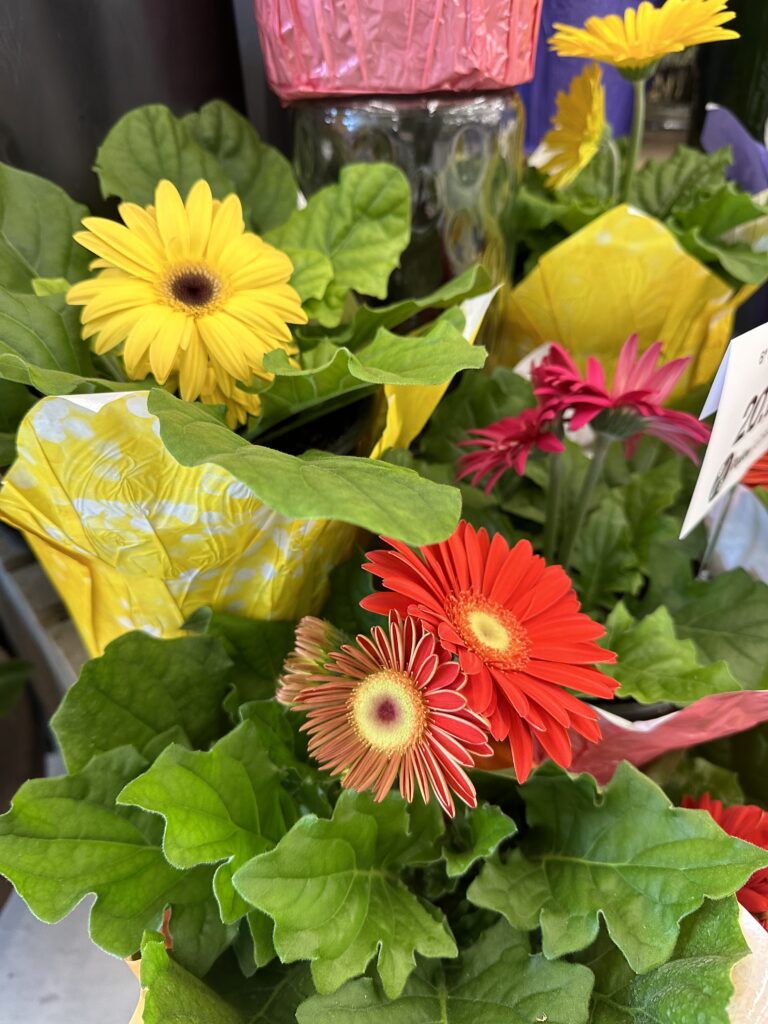
You know the moment – you walk into the entrance of your grocery story and see an enticing display of all those gorgeous blooms beckoning you to take them home! Those stunning gerberas you see at the grocery store in early or late spring that are calling your name – can they become permanent residents in your garden?
Well…..the answer is a bit of a maybe. Here’s why:
- Grocery store gerberas are typically commercially grown in greenhouses, which means a controlled environment. These environments optimize flower production but may not mirror the conditions of your backyard.
- They are often bred for aesthetics and long vase life, not necessarily to be planted or survive in an outdoor garden. As a result, they may be kind of wimpy & won’t hold up to weather or pests in your garden.
- Since they were grown for aesthetics or to survive in a bouquet, grocery store gerberas are usually single stems with minimal root systems. These may struggle to establish themselves outdoors.
So, should you completely avoid planting grocery store gerberas? Not necessarily! First question to ask yourself is whether you are looking to plant them as perennials or annuals?
If you are looking for them to survive as perennials & you live in a warm climate, the best results will be if you put them in a nice warm spot (once you harden them off a little bit, see below) in some rich soil.
If you are looking to plant them in the garden, knowing they will be an annual but just want them outside and not in a pot, then you can have some success if you give them a little attention before hand.
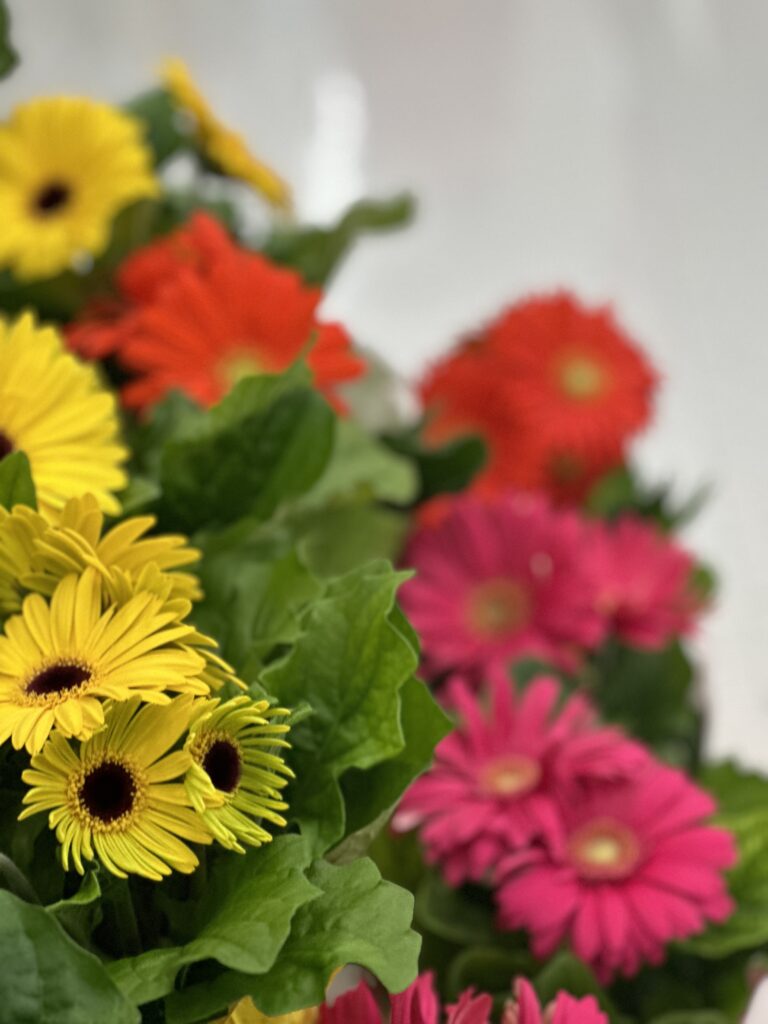
Tips for Planting Grocery Store Gerbera Daisies
If you decide to give grocery store gerberas a shot in your garden, here are some tips to increase their chances of success:
- Harden Them Off: Before transplanting outdoors, gradually acclimate your gerberas to outdoor conditions. Take them outside for increasing periods of time each day over a week or two. Avoid putting them in full sun while you are first beginning to acclimate them., Put them in a place where they get bright light, then gradually increase the amount of sun they get.
- Repotting: As mentioned, the grocery store variety often have minimal root systems. One way to strengthen you plant is to repot it into a larger pot with fresh potting mix before planting them in the garden. This allows the root system to develop further.
- Choose the Right Spot: Once you are ready to plant them after you harden them off, select a location with full sun and well-draining soil.
- Tender Care: You will have to baby them for a bit! Provide regular watering and fertilization to give them the best chance of establishing themselves.
Remember: Planting grocery store gerberas (the same caveat may also be true for flower shop gerberas, or even garden center gerberas. Check with your local garden center in terms of how they grow them/where they get them from) is a bit of a gamble. But, even if they don’t survive long-term, they can bring a little burst of color to your garden for a while.
Are Gerbera Daisies Toxic to Dogs or Cats?

If you can’t resist the lure of those gorgeous flowers on your next trip to the grocery store, and buy them to keep in the house, one question we get asked is – are they toxic to dogs or cats?
According to the ASPCA, Gerbera Daisies are considered non-toxic to both cats and dogs. However, if your pet does get into them, and eats a lot of it (puppies, am I right?) it can cause them to have an upset stomach.
Unfortunately, commercially grown flowers may also have traces of pesticides. So this may also lead to vomiting, diarrhea, or mild abdominal discomfort if your pet eats the plant, especially if they eat a lot of it. If you see any of these symptoms, its best to take your pet to the veterinarian right away.
Ideal Growing Conditions for Gerbera Daisies
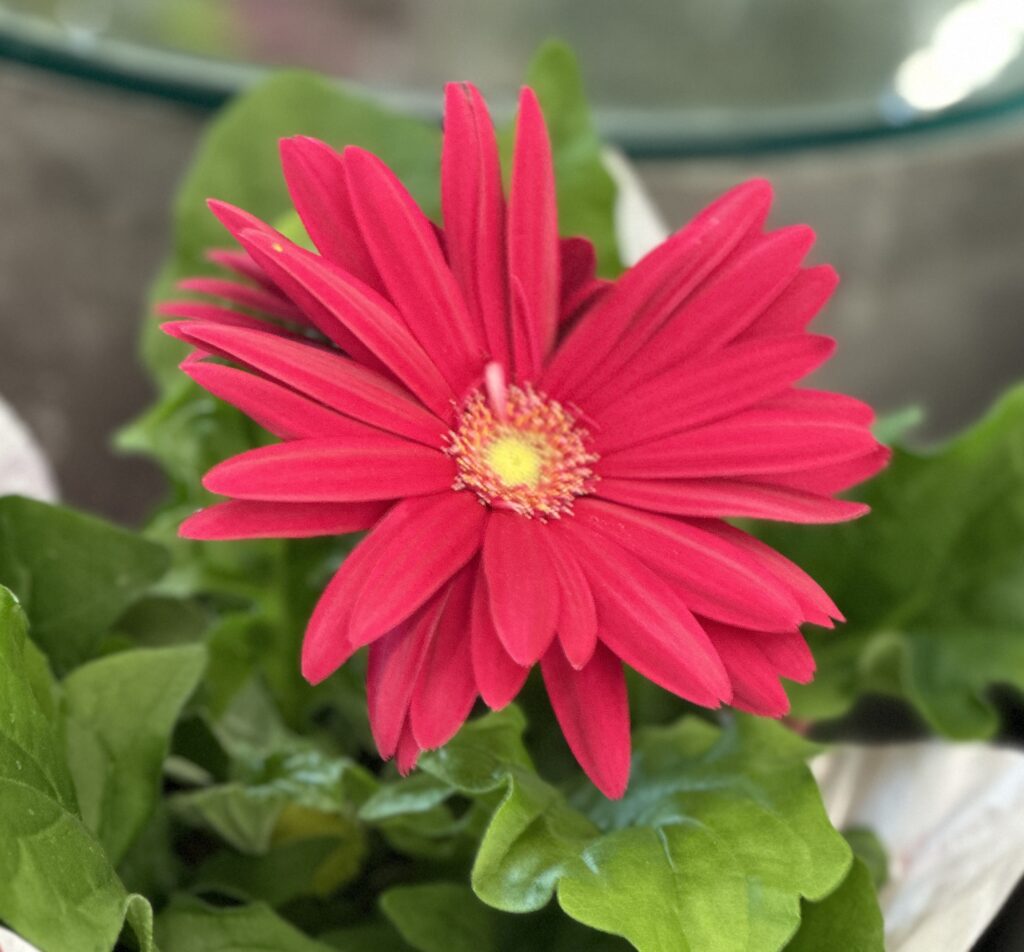
Gerbera Daisies are relatively low-maintenance plants, but they do have some specific needs for optimal growth:
- Sunshine: As we said, the Gerbera daisy flower is actually an African daisy, so they love sun & heat! Aim for at least 6-8 hours of direct sunlight daily to get lots of flowers.
- Well-Drained Soil: Gerbera daisies dislike soggy feet. They want good drainage & consistent soil moisture. Choose a well-draining soil mix, adding organic matter like compost for improved drainage and nutrient content.
- Regular Water: Water your gerberas regularly, aiming to keep the soil evenly moist but not waterlogged. Allow the top inch of soil to dry slightly between waterings.
- Fertilizing: During the growing season, feed your gerberas a balanced fertilizer every 4-6 weeks. Opt for a water-soluble fertilizer diluted according to package instructions. See our post outlining the fertilizer system we started using with great success!
- Deadheading: To encourage continuous blooming, deadhead spent gerber daisies flowers regularly by pinching them off just below the bloom head. This promotes new flower production.
- Mulch: Apply a layer of mulch around the base of your plants to retain moisture, suppress weeds, and regulate soil temperature.
Pop these small little colorful bloomers in a super sunny spot in your garden and wake up every morning to see it smiling at you!
Can You Grow Gerbera Daisies From Seed?
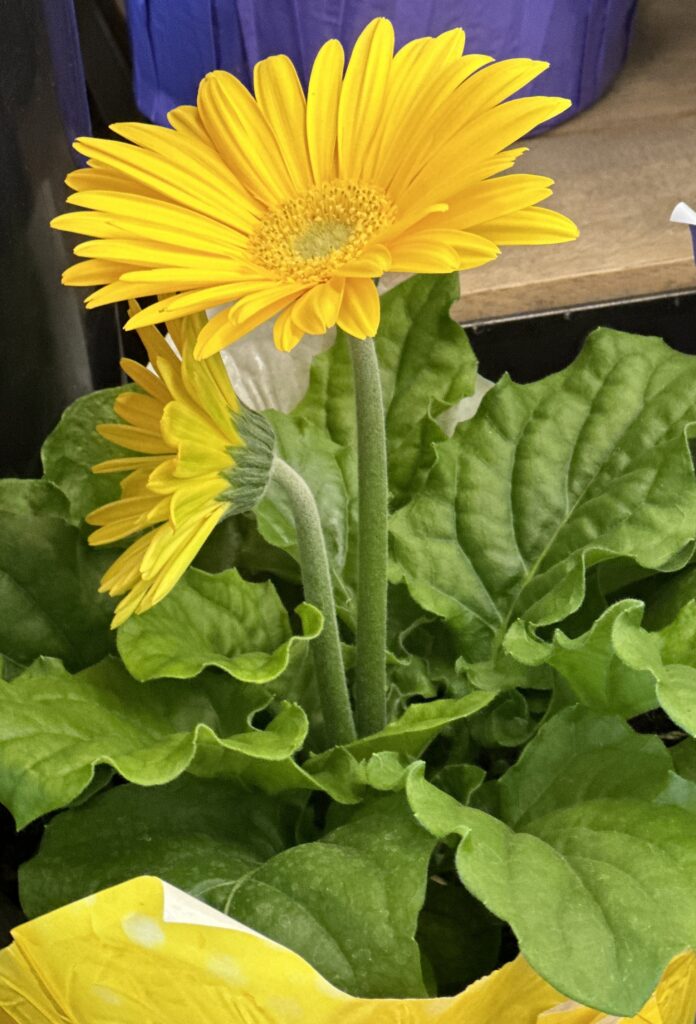
You can grow Gerbera Daisy plants from seed. It is a bit of a time-consuming method as you want to start Gerbera daisy seed indoors 10-12 weeks before the last frost. Once seedlings are established and the danger of frost has passed, transplant them outdoors into your garden.
Perhaps the more common method of propogation – at least for those lucky enough to live in zones 8-10 where Gerbera Daisies are perennials – is division. This method is ideal for established perennial gerbera plants.
Divide the plant in spring when new growth emerges. Carefully separate the sections, ensuring each division has roots and healthy foliage. Plant the divisions in new locations in your garden. I can tell you right now, if I ever lived in this type of climate and a neighbor divided their Gerbera Daisies AND THEN GAVE ME SOME? Honestly, friend for life. Friend. For. Life.
You can find Gerbera Daisies and gardening equipment as part of a large selection in our storefront!
Gerbera Daisies Are A Pollinator Plant
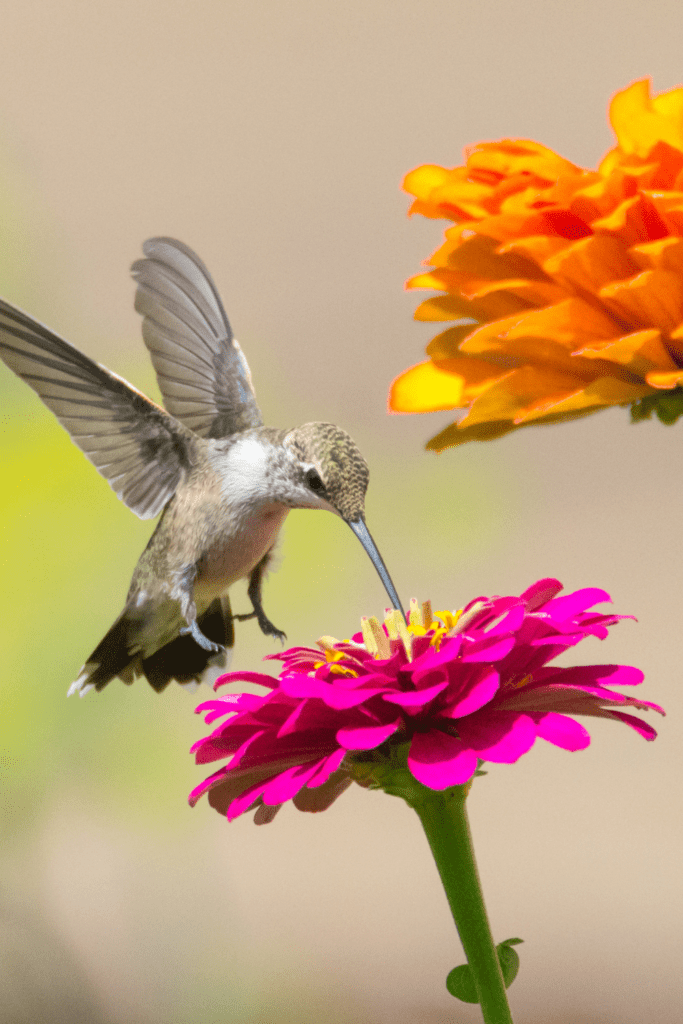
As you know, we love flowers that attract the pollinators to our yard. We want our yard to be full of life as well as beautiful. Almost all plants and flowers in our yard serve a purpose, and it’s no surprise with their super bright colors that Gerbera Daisies have nectar that the pollinators love.
We have hummingbird feeders in our yard, but we also want to plant a variety of flowers to give them lots of nectar options. Watching them fly around is one of the joys of summer.
Butterflies also love to sit on those wide open flowers and get their nectar, and you will be rewarded in being able to watch the flutter around the yard.
If you love to vegetable garden, but you live in zone 7 or higher & you can’t grow Gerbera Daisies as perennials, you will still be an amazing friend to all the pollinators if you put gerbera daisies in your container gardens around the yard or on your porch. Place it in a sunny spot with good soil drainage and it will thrive!
You will have gorgeous flower pots plus help the creatures that help you in return by cross pollinating your veggies! See our sure fire liquid fertilizer system for producing gorgeous, overflowing container gardens here.
Gerbera Daisies Common Pests & Problems
Generally speaking, if you live in one of the warmer climates & plant Gerbera Daisies in your garden, they are pretty easy to care for and have pretty good disease resistance, although some pests & diseases can be a common problem. Here is what to watch out for and how to combat these issues.
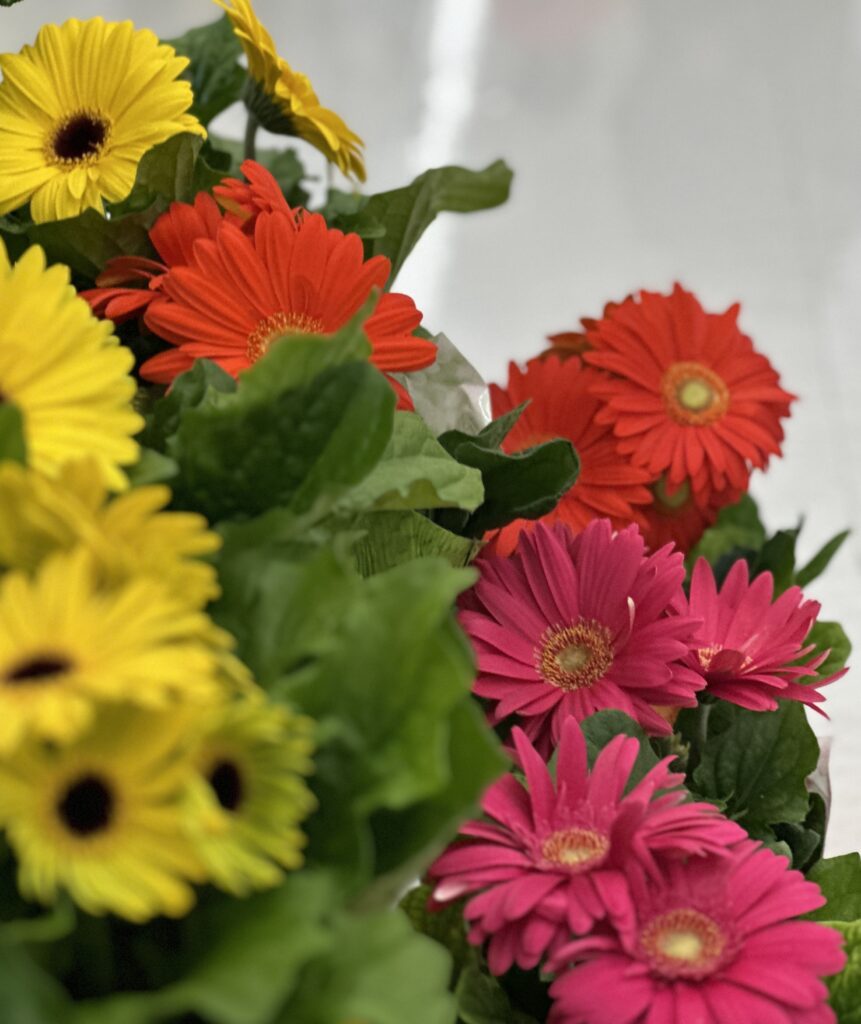
- Aphids: These tiny, sap-sucking insects can infest the stems and leaves of your gerbera daisies. They appear as soft-bodied, green, brown, or yellow insects and cause leaves to curl, turn yellow, and eventually drop.
- Thrips: These small, slender insects also feed on the sap of gerbera daisies. Signs of thrips infestation include white or silver speckling on leaves and distorted flower petals.
- Whiteflies: These tiny white insects with wings congregate on the undersides of leaves, sucking sap and leaving behind a sticky residue called honeydew. Honeydew can attract mold and weaken the plant.
- Slugs and Snails: These slimy creatures munch on leaves and flowers, leaving ragged holes and slimy trails in their wake.
Fungal Issues:
- Powdery Mildew: This fungal disease appears as white or grayish powdery patches on leaves and stems. It thrives in humid conditions and can stunt plant growth and reduce flower production.
- Botrytis Blight (Gray Mold): This fungal disease causes flowers and buds to develop brown, mushy spots and become covered in a grayish mold. It often occurs in cool, damp conditions with poor air circulation.
- Root Rot: This fungal disease affects the roots of the plant, causing them to rot and decay. Signs include wilting leaves, stunted growth, and eventual plant death. It thrives in overly wet soil conditions.
Combating these threats:
Here are some tips to keep your gerbera daisies healthy and pest-free:
- Prevention is Key: Proper watering practices, ensuring good air circulation around plants, and removing spent flowers can help prevent many pest and disease problems.
- Monitor Regularly: Regularly inspect your gerberas for signs of pests or diseases. Early detection allows for quicker intervention.
- Natural Solutions: For minor infestations, insecticidal soaps or neem oil solutions can be effective in controlling pests organically.
- Fungicides: For fungal diseases, fungicide sprays may be necessary. However, always follow the instructions on the product label carefully.
- Severe Cases: In cases of severe infestation or disease, removing and destroying infected plant parts or even the entire plant may be necessary to prevent further spread.
Are Gerbera Daisies Perennials or Annuals?

We hope that we have answered your question as to whether Gerbera Daisies are perennials, and have given you some additional answers to your burning questions about these showstopping, gorgeous flowers!
This is part three of a series answering this question for all our favorite summer flowers, so be sure to check out our first part of the series answering the question – are impatiens perennials; and part two – are zinnias perennials?
If you are looking for more gardening inspiration, check out our gardening section of the blog. It includes information on more of our favorite pollinator plants, raised garden beds, and gift ideas for gardeners too!
Happy Gardening!
Slowestuff
Love Gardening Content? Pin This Post to Find Us Again!

[…] Part Three is: Are Gerbera Daisies Perennials? […]